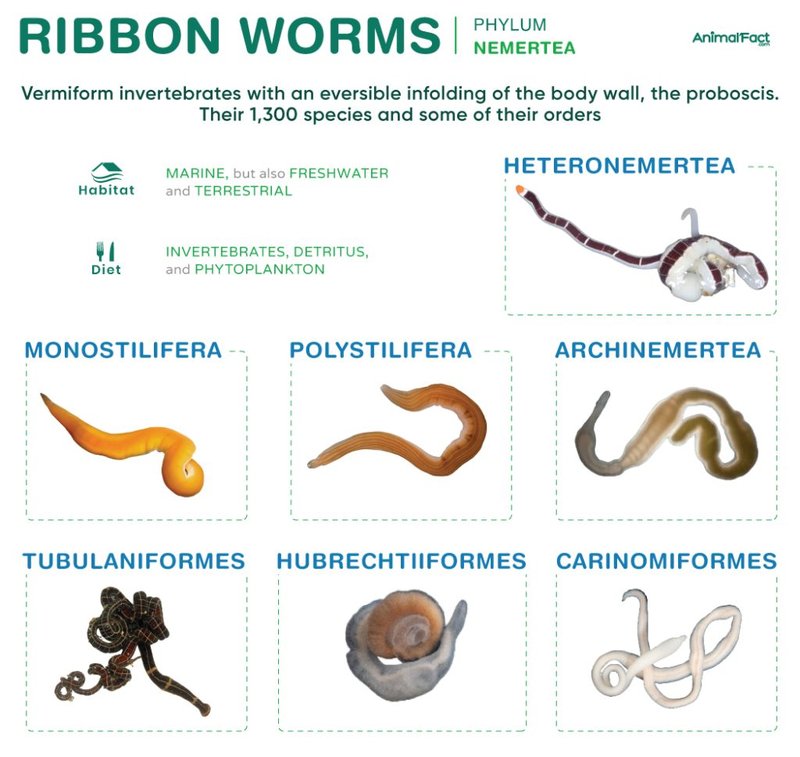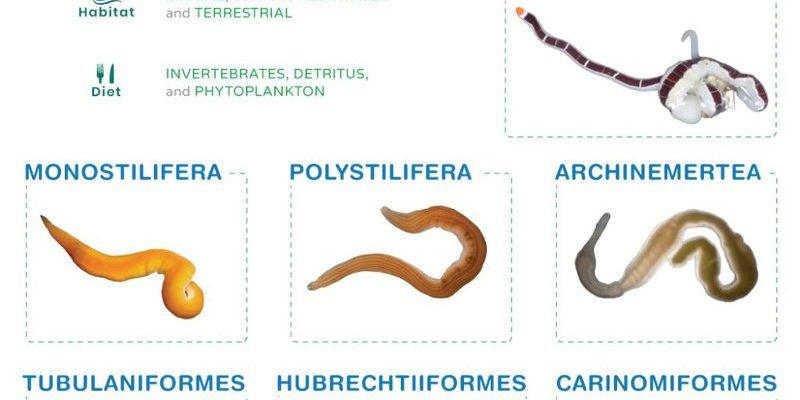
These worms, known scientifically as *Nemertea*, are often overlooked in the marine world, but their colors can tell us a lot about their habitats and behaviors. Some species flaunt bright colors to warn predators, while others use their hues to blend in with their surroundings. Let’s dive deeper into this colorful world of ribbon worms and discover how their vibrant appearances reflect their diverse lifestyles.
What Are Ribbon Worms?
Ribbon worms are soft-bodied invertebrates that can stretch up to several feet long. They live in both marine and freshwater environments, usually hiding under rocks or in the sand. You might be wondering what makes these worms so special. Well, aside from their length, they have a unique characteristic called a proboscis, which they can extend to catch prey. It’s like a slinky that can spring into action when it needs to grab a snack!
Despite their name, ribbon worms aren’t actual worms in the traditional sense. They belong to a separate phylum, which makes them more closely related to jellyfish and sea anemones than to earthworms or roundworms. This special classification adds to their allure, as it emphasizes their distinct biological traits.
In terms of appearance, ribbon worms have smooth, elongated bodies that can vary in color. From deep reds to vibrant greens, their shades play a crucial role in their survival. This is where their color variations really start to shine.
The Science Behind Coloration
You might be curious about why ribbon worms come in so many colors. The science behind this pigmentation is quite fascinating! These colors are mainly due to the presence of specific pigments in their skin cells. For example, some ribbon worms contain carotenoids, which give them yellow, orange, or red hues, while others have different pigments that result in blues and greens.
Besides just looking pretty, these colors serve important functions. Bright colors can signal danger to potential predators, a strategy known as **aposematism**. When fish or other animals spot a brightly colored ribbon worm, they might think, “Yikes! That could be poisonous!” On the other hand, muted colors allow these creatures to camouflage themselves in their environments, helping them stay hidden from hunters.
Moreover, environmental factors like temperature and habitat can influence these colors. Ribbon worms living in sandy, sunlit areas may develop lighter shades to blend in, while those in darker places might adapt by becoming darker themselves. This adaptability shows just how remarkable these creatures truly are.
Rainbow of Colors: An Overview of Ribbon Worm Species
Let’s take a closer look at some specific species of ribbon worms and their color variations. It’s like flipping through a marine color palette, where each species has its own unique shades. Here are a few notable examples:
- Lineus longissimus: This species is famous for its striking yellow to orange coloration, often found in tidal pools.
- Cephalothrix rufifrons: With a reddish-brown body, this worm blends seamlessly into its muddy habitat.
- Nemertopsis binghamiae: This one displays a beautiful greenish tint, perfect for hiding among aquatic plants.
As diverse as their colors are, these species also exhibit different behaviors that link to their appearances. For instance, bright-colored species might be more cautious, using their vivid colors as a warning. Meanwhile, others may rely on their more muted tones to sneak up on prey.
How Color Affects Ribbon Worm Behavior
The colors of ribbon worms do more than just grab attention—they play a significant role in their behaviors and interactions. The vibrant pigments can indicate a worm’s health and vitality. A brightly colored worm is often a good sign of an active and well-nourished individual. In contrast, dull or faded colors may suggest stress or illness.
Furthermore, these colors can influence mating behaviors. During mating season, you might notice more vivid showcasing to attract potential partners. Think of it as nature’s way of putting on a flashy display—like peacocks strutting their feathers to impress others.
Ribbon worms are also affected by their competition for resources. If they find themselves in a crowded area with multiple species, their colors may change as they adapt to avoid confrontation. Those that can effectively blend in with their surroundings are more likely to survive and thrive.
Conservation and the Future of Ribbon Worms
As beautiful as they are, many ribbon worm species face threats due to environmental changes. Pollution and habitat destruction can lead to a decline in their populations, which is concerning given their role in marine ecosystems as predators and prey. Protecting their habitats is essential for maintaining the delicate balance in their ecosystems.
You might wonder how these creatures fit into the broader picture. Their vibrant colors and adaptable behaviors serve as indicators of the health of marine environments. If ribbon worms are thriving, it’s a good sign that their habitat is also in good shape.
Educating others about ribbon worms and their significance can play a crucial role in conservation efforts. By spreading awareness, we can help protect these fascinating creatures and their colorful world.
Exploring the color variations in ribbon worms opens up a vibrant world that many people overlook. These amazing creatures showcase a beautiful spectrum of colors—each hue telling a story of survival, adaptation, and even romance. By understanding their unique traits and the science behind their colors, we gain deeper insight into the intricate web of life beneath the waves.
As we continue to learn about these ribbon worms, remember that their colors reflect the health of their environment. Protecting their habitats ensures that future generations will continue to marvel at these stunning animals. So the next time you think of ocean creatures, imagine the brightly colored ribbon worms dancing through the water, each one a little piece of art in the vast marine gallery.

